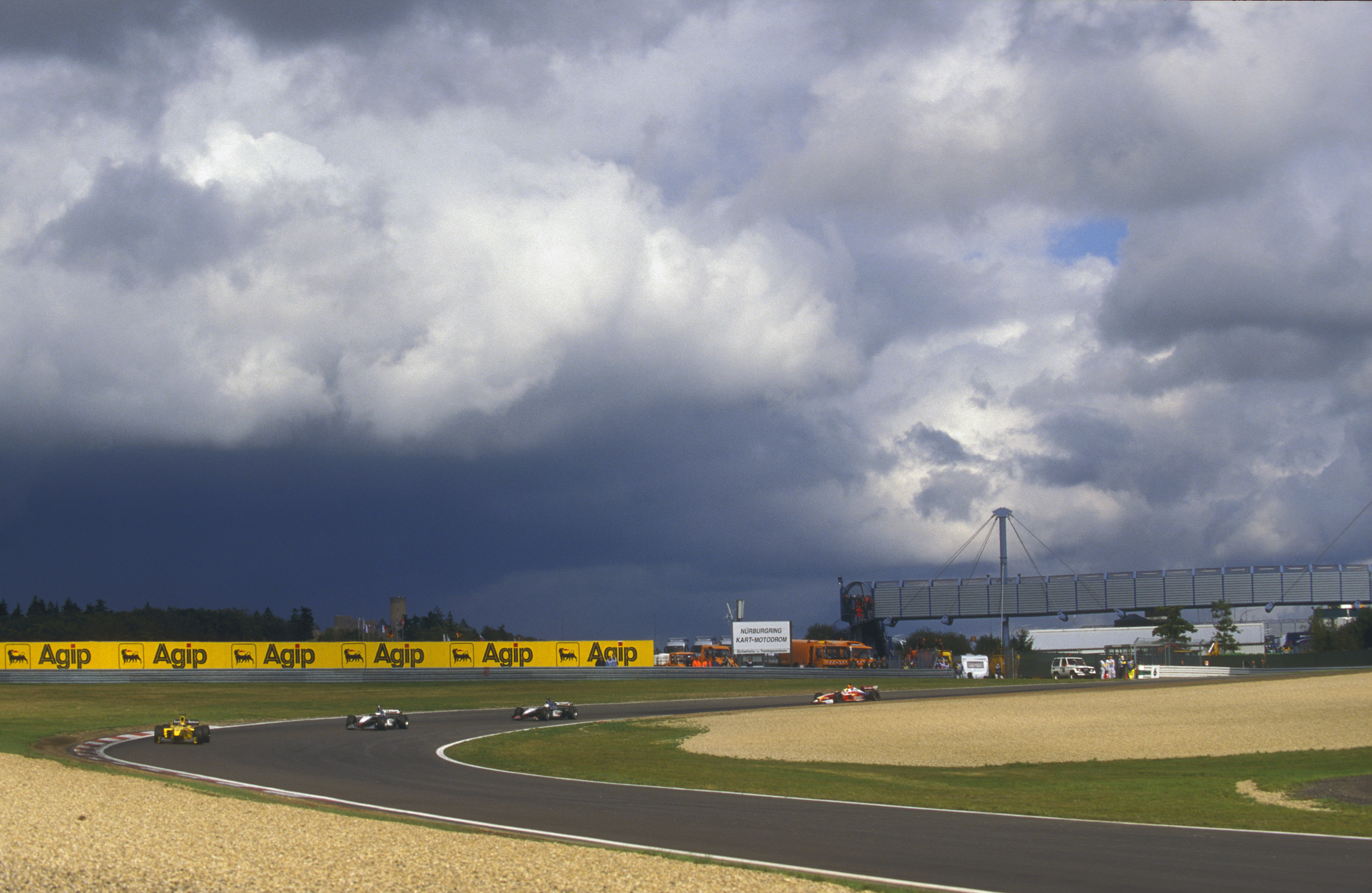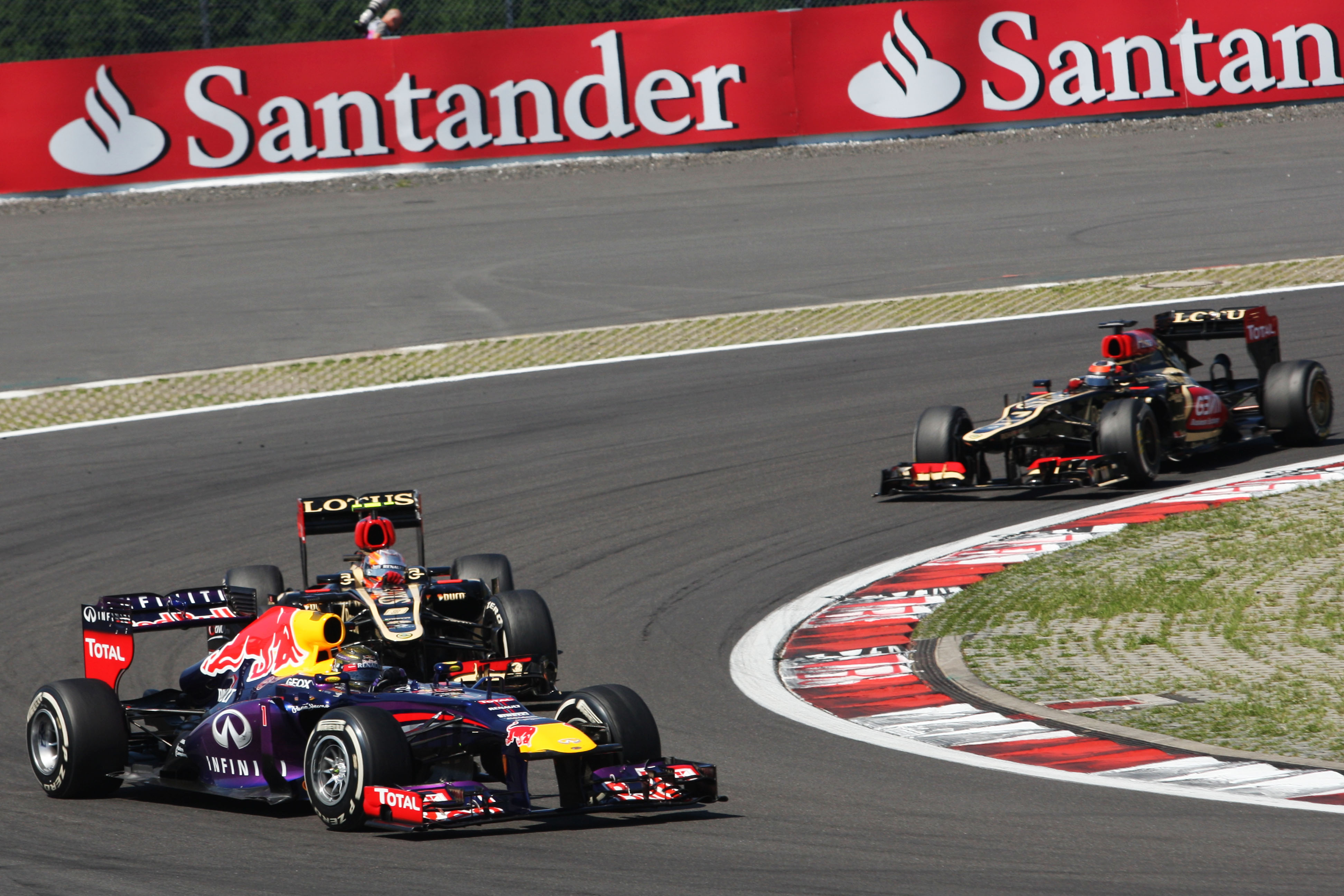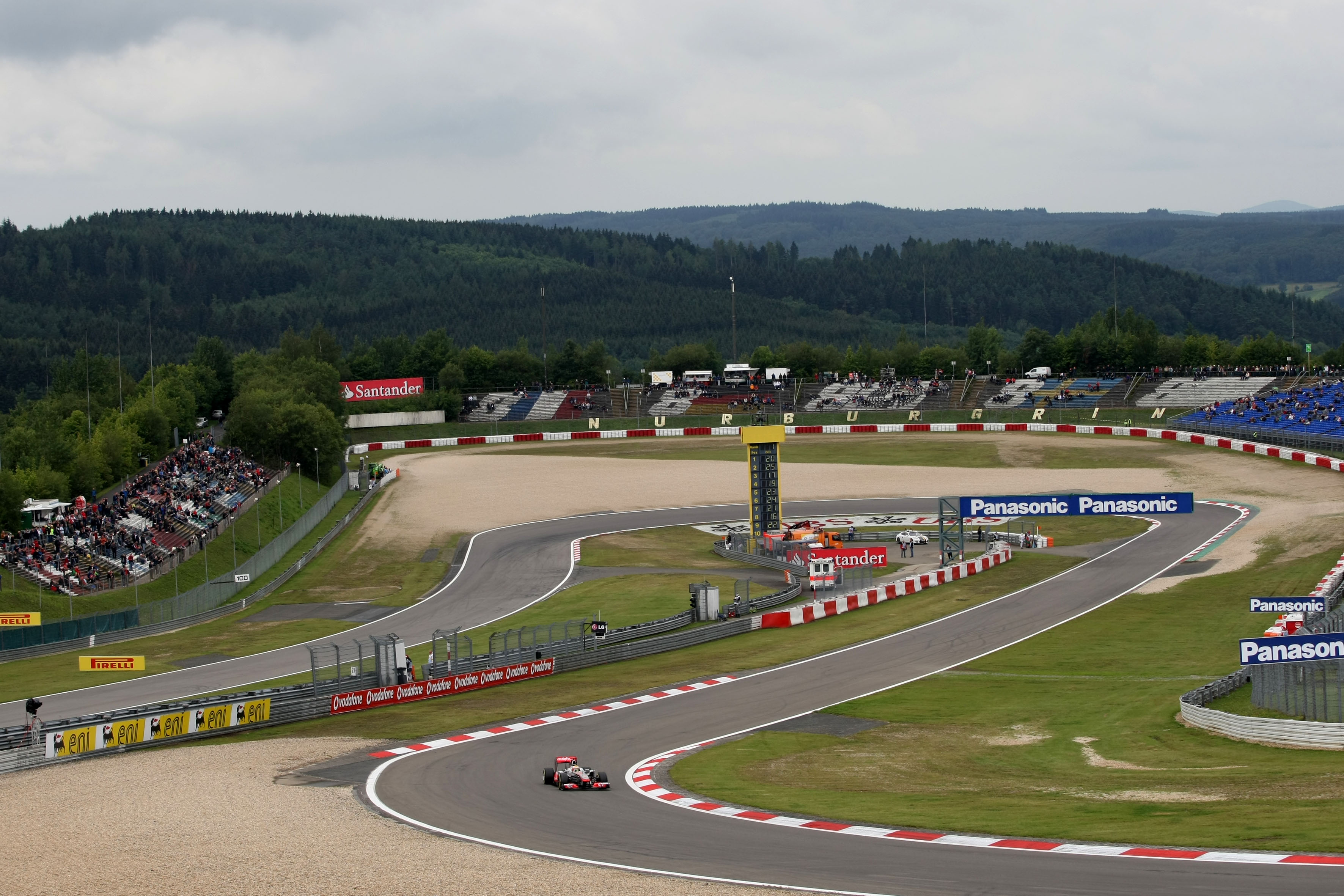Up Next

Of the four surprise additions to the 2020 Formula 1 calendar, the Nurburgring might at first glance seem the least inspiring.
Mugello and Algarve offer the intrigue of hosting their first ever F1 races, while the rave reviews Imola received from AlphaTauri drivers Daniil Kvyat and Pierre Gasly after their promotional run at the track last month show how it’s likely to be received.
But the Nurburgring – last used for a grand prix in 2013 – could provide the best racing of the quartet.
Here are three reasons why:
Wildly unpredictable weather

The October 11 race date is the latest the Nurburgring has ever held an F1 race. And the last time its grand prix was in October, back in 1995, the mixed conditions set the scene for arguably Michael Schumacher’s greatest win for Benetton.
Jean Alesi’s sublime slicks-in-the-wet skill gave him a huge lead initially, but Schumacher hunted him down not once but twice (making three pitstops to Alesi’s one) before snatching victory with a last-gasp pass. And that pass came after seeing title rival Damon Hill in the wall and realising that he really didn’t need to take a risk going for victory – and then doing so anyway.
The late-September 1999 race (pictured above) was another great example of autumnal Eifel weather turning a grand prix inside out.
A weekend of sudden showers seemed to set up a title charge for Heinz-Harald Frentzen and Jordan as they took pole then outfoxed and outduelled McLaren and Ferrari in the changing conditions, only for a curious retirement to hand control to fellow underdog Ralf Schumacher’s Williams – whose heartbreaking puncture set up a Stewart 1-3 for Johnny Herbert and Rubens Barrichello, sandwiching Jarno Trulli’s Prost.
In this region, you don’t need to wait for autumn for mad weather – the famous 2007 race in which Markus Winkelhock led for Spyker on his sole F1 start happened in July. But the chances of very low temperatures creating set-up headaches and rain coming and going out of nowhere are a lot higher in October. And this is already feeling like a season that’s likely to need some wildcard factors.
A ‘Tilke’ section that’s great for racing

There wasn’t a lot of subtlety about the 2002 revamp in which the Turn 1/2 S-bend was replaced by a sinuous Turn 1-4 ‘stadium’ section as part of the decade’s fashion for adjusting established tracks to create more passing chances.
But although it didn’t do a lot for the flow of the track, it did achieve its aim (which is more than could be said for the chicane before Barcelona’s final corner, for instance).
The massive braking point into the ultra-tight Turn 1 sets up a classic slow in/fast out or fast in/slow out wheel to wheel scenario, which can often take another three corners to fully shake out as the circuit loops back in on itself through the Turn 2/3 left-handers before going straight into the tight Turn 4 right-hander. The width of the circuit allowing for a variety of lines helps too.
There’s even scope for those battles to continue right down to the Turn 5/6 left/right, which is where Fernando Alonso finally settled his 2007 lead fight with Felipe Massa.
It will bring the best out of this generation of cars

The Nurburgring’s sequence of corners might not conjure up the same spectacular images as Imola or Mugello, or even places on a regular F1 calendar like Silverstone or Spa.
But it has a good mix, probably more so than the likelier 2020 German F1 venue Hockenheim, and it’ll be fascinating to see how it suits the current generation of car.
The Nurburgring might just be made for the high-downforce, V6-turbo hybrids.
Big stops and sensitive traction zones are great fun for a car with such swift power delivery, so the first corner and most of the first sector will be a good challenge.
The areas of sensitivity will only be heightened with a bit of inclement weather, or even just a cold and low-grip weekend.
And the sweeps of sector two and a chicane begging to be attacked in sector three should reward the cornering qualities of the current generation.
Very few circuits are easy for F1 cars to follow each other but there’s enough about the Nurburgring to compress a trail of cars in the first part of the lap before the long run up to the chicane and the stop into Turn 1 is a big one.
It should be a fun and difficult circuit for this crop of cars to race on.



